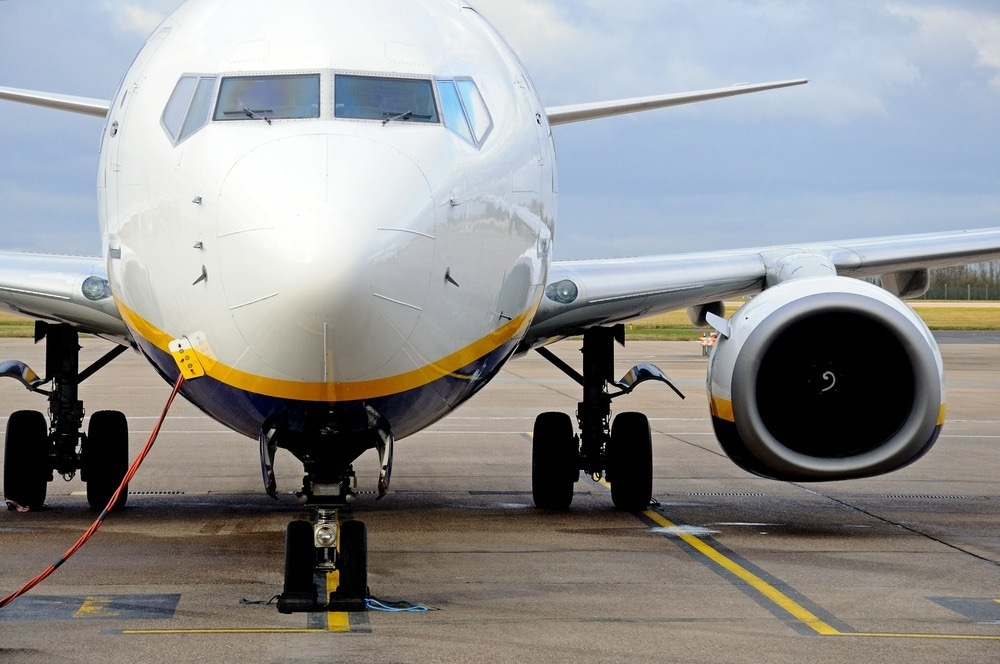In a recent study published in PLOS Global Public Health, researchers performed severe acute respiratory syndrome coronavirus 2 (SARS-CoV-2) surveillance in UK airports using wastewater monitoring.
 Study: Wastewater-based monitoring of SARS-CoV-2 at UK airports and its potential role in international public health surveillance. Image Credit: Caron Badkin/Shutterstock
Study: Wastewater-based monitoring of SARS-CoV-2 at UK airports and its potential role in international public health surveillance. Image Credit: Caron Badkin/Shutterstock
Background
Air travel plays a significant role in spreading numerous enteric and respiratory infections worldwide, including coronavirus disease 2019 (COVID-19). Although travel limitations have been put into practice worldwide, asymptomatic or pre-symptomatic carriers of SARS-CoV-2 may transmit the virus.
To assess the SARS-CoV-2 infiltration rates across international borders, additional methodologies must be developed since the current clinical monitoring systems are still limited. One such method is wastewater-based epidemiology (WBE), which permits unbiased sampling of SARS-CoV-2 samples among passenger groups entering airports.
About the study
In the present study, the team explored sewage found in terminal and aircraft samples at three international airports in the United Kingdom for one to three weeks.
The team evaluated five sample concentration procedures on specimens spiked with SARS-CoV-2 and utilized the most effective approach on surveillance samples. As a process control, the SARS-CoV-2-spiked samples were split into three aliquot sets, further spiked with phi6 bacteriophage. Along with each sample batch, positive and negative process controls were also employed to assess cross-contamination and recovery efficiency. Each sample was subjected to two pre-treatments involving beef extract (BE)-sodium nitrate (NaNO3) and sodium chloride (NaCl) along with two concentration techniques involving ultrafiltration and polyethylene glycol (PEG) precipitation.
One of the aliquot sets was concentrated with PEG precipitation as well as ultrafiltration without any prior treatment. The second set was combined with sodium chloride. The samples were centrifuged to separate solids from the supernatant, which were subsequently PEG-precipitated to form NaCl/PEG, followed by ultrafiltration to form NaCl/Amicon. In the third set, sodium nitrate and beef extract were combined. Centrifugation and PEG precipitation of the samples resulted in the formation of BE-NaNO3/PEG samples.
Results
The BE-NaNO3/PEG precipitation approach demonstrated the highest virus recovery among the studied procedures, for the SARS-CoV-2 N1 gene fragment as well as the phi6 process control virus. Also, a Shapiro-Wilk normality test revealed that the data distribution for phi6, SARS-CoV-2, and crAssphage deviated remarkably from normality. A Kruskal Wallis rank sum test and Pairwise Wilcoxon tests showed that the BE-NaNO3 technique was significantly superior for SARS-CoV-2 and phi6 recovery and crAssphage. Therefore, the surveillance samples were treated with BE-NaNO3 prior to PEG precipitation.
The control virus was detected in the majority of samples; however, none of the vacuum truck samples from the Heathrow airport reported viral presence. The recovery rates of vacuum truck samples at the Bristol and the Heathrow central terminal area (CTA) sites were low. In a few instances, SARS-CoV-2 and crAssphage were found in samples with no Phi6 recovery, perhaps as a result of low spiking quantities.
Most wastewater samples collected from the three airports contained crAssphage deoxyribonucleic acid (DNA) and SARS-CoV-2 ribonucleic acid (RNA). The international terminal (JR)-1 Edinburgh airport samples displayed the lowest SARS-CoV-2 levels and detection rates. The remaining samples collected in Edinburgh tested SARS-CoV-2-positive, with the exception of one sample collected at the wastewater treatment plant (WWTP).
All samples collected at Edinburgh Airport reported high amounts of crAssphage. However, pumping station (P1), JR2, and JR3 sites exhibited much greater turbidity, ammonium levels, and electrical conductivity than WWTP and JR1 sites. No remarkable trends were noted in SARS-CoV-2 concentrations over time at any of the sites sampled.
At Bristol and Heathrow airports, all sewage samples obtained from the terminals tested SARS-CoV-2- and crAssphage-positive. At these locations, the amounts of ammonium and turbidity in the specimens were higher than those in the Edinburgh samples. The pH values of samples obtained at Bristol sites were also higher than at Heathrow and Edinburgh. Furthermore, there was no link identified between viral levels and chemical data.
The contents of vacuum trucks transporting airplane sewage were also examined for SARS-CoV-2 presence. At Bristol and Edinburgh, all samples tested SARS-CoV-2-positive, while at Heathrow, all except two samples tested positive. Also, crAssphage was identified in all vacuum truck samples obtained from Bristol and Edinburgh airports and 40% of those obtained from Heathrow airport. Additionally, the team found no link between the detection rates or levels of SARS-CoV-2 and crAssphage. Also, sample pH, orthophosphate levels, turbidity, and, in some instances, electrical conductivity were significantly greater than those of the other samples.
Conclusion
The study findings showed that WBE might be utilized as an effective surveillance technique for SARS-CoV-2 and other viral infections at airports to locate outbreak hotspots internationally and to evaluate trends in infection predominance. The study noted that even with extremely effective extraction techniques, airplane wastewater samples might contain solids and chemicals that diminish the likelihood of efficient virus detection.
The researchers believe regular sampling of aircraft and airport wastewater can serve as a focused surveillance method for novel illnesses and other agents not yet endemic to the country.